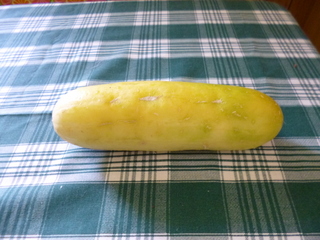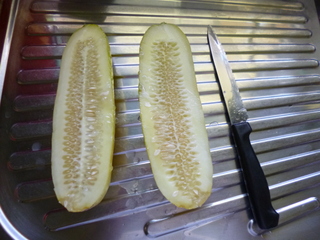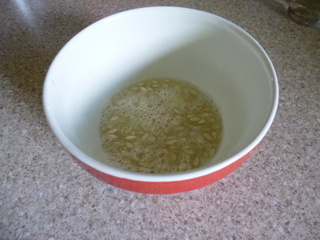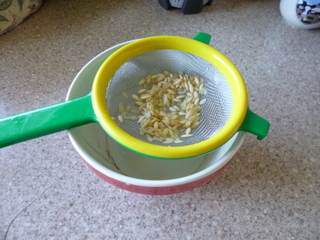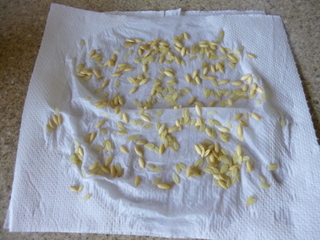These vegetables are from totally different families but share a characteristic that means they are treated in a similar fashion when we want to save their seeds – their seeds are surrounded by a sticky gel which needs to gotten rid of before they can be dried for saving. This process of removing the gel involves fermentation, which as a side benefit can destroy seed borne disease organisms such as bacterial spot in tomatoes.
Tomatoes are pretty much self pollinated but with the cucumbers, you need to have ½ a kilometre between varieties, although other cucurbits are not a problem. Leave both fruits to ripen on the vine or plant, the cucumber may grow quite large and will turn yellow to golden or brown. Tomatoes, of course, are tomatoes and should be just past “eating” ripe.
For both types of fruits, slice them open and scrape out the mass of jelly and seeds into a bowl or jar and leave them to ferment for a few days, the tomatoes tend to get frothy, the cucumbers less so. Once they have fermented pour the contents through a sieve and wash in plenty of clean water to remove the remains of any adhering jelly. I then place them onto some mesh or even paper towel and allow them to dry for a week or so before storing them. They will stick to the paper towel but are easily removed.
Store the seeds in an envelope labelled with the name and variety of the vegetable as well as the date the seeds were harvested. Both seeds will last for up to four years when stored in a cool, dry area.



